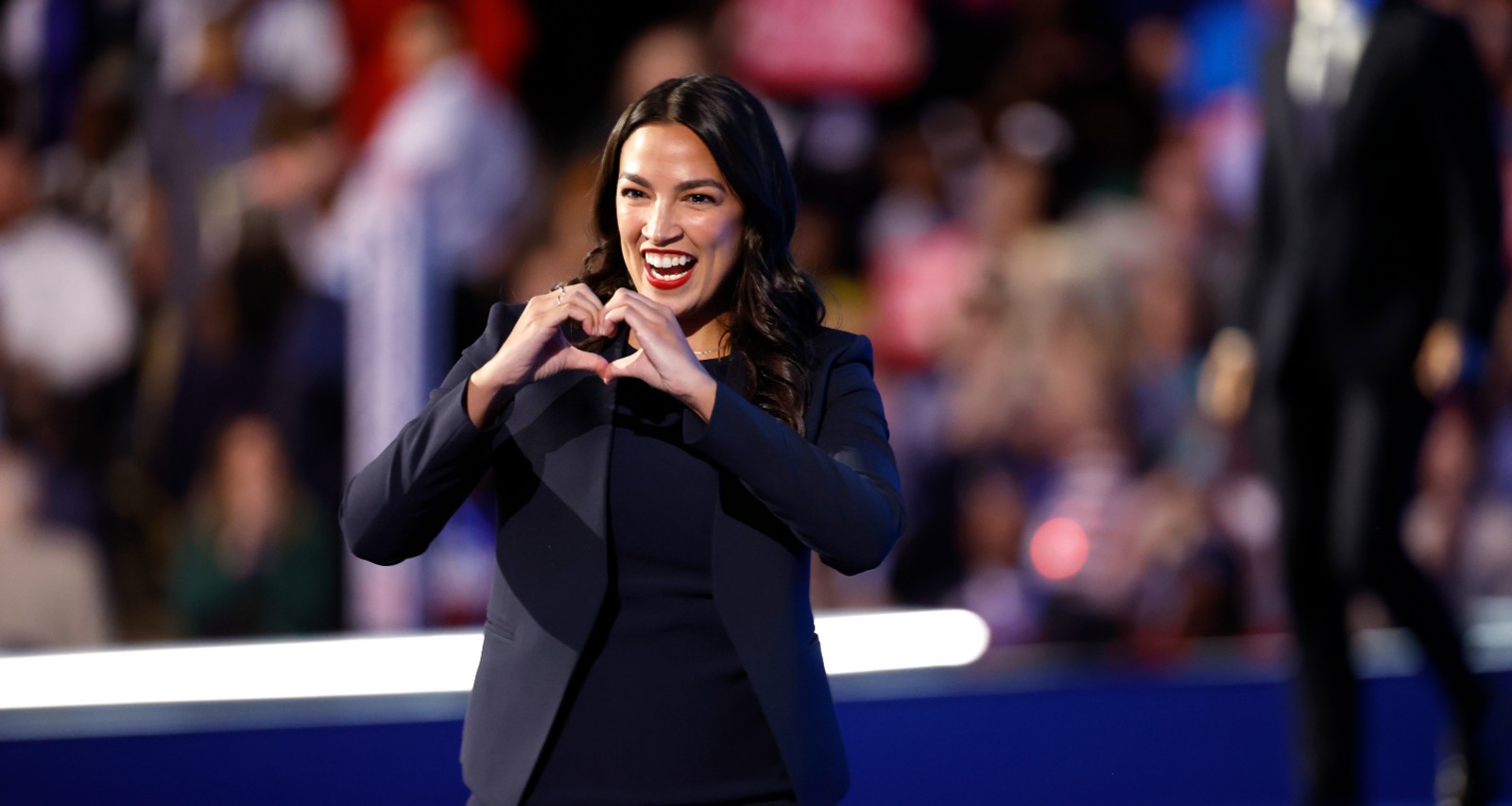NOTE:VIDEO AT THE END OF ARTICLE.
Introduction
In a landmark moment for progressive politics, U.S. Representative Alexandria Ocasio-Cortez (D‑NY) recently offered a compelling glimpse into her future plans, signaling a potential shift in the Democratic Party’s leadership. Speaking alongside Senator Bernie Sanders at a rally in Los Angeles’s Gloria Molina Grand Park, Ocasio-Cortez delivered a pointed critique of economic inequality and revealed her unwavering commitment to challenging entrenched power structures. Simultaneously, a new Data for Progress poll rattled the political establishment, showing Ocasio-Cortez poised to potentially unseat Senate Minority Leader Chuck Schumer in a hypothetical 2028 Democratic primary. This comprehensive article unpacks her remarks, examines the poll’s methodology and implications, and explores what these developments mean for both her career and the broader progressive movement.
1. Rallying Against the Oligarchy
1.1 Setting and Context
On a warm California evening, thousands gathered at the heart of downtown Los Angeles for a rally orchestrated by progressive activists. The guest list featured two of the left’s most influential figures: Representative Alexandria Ocasio-Cortez and Independent Senator Bernie Sanders. Their shared stage symbolized the growing unity among America’s progressive caucus.
1.2 Key Excerpts from Ocasio-Cortez’s Remarks
- Fighting Economic Concentration: “Los Angeles, I’ve made my choice. We must fight the oligarchy that has created this nightmare,” Ocasio‑Cortez declared. With her characteristic blend of passion and precision, she underscored her refusal to accept corporate influence in Washington. “I have never taken money from lobbyists or corporations, and I never will.”
- Stock Market Sell-off Critique: Turning to recent market turmoil, she charged that Wall Street insiders profited at the expense of ordinary Americans. “It was about hurting retirees and everyday people in the stock sell-off so Trump could quietly enrich his friends who bought the dip before reversing it all the next morning.”
1.3 Sanders’s Supportive Commentary
Senator Sanders echoed her critique of concentrated wealth: “A handful of billionaires control the economic and political life of our country,” he said. Sanders praised the grassroots energy in the crowd and warned that Donald Trump and tech mogul Elon Musk were growing “very nervous.”
2. The Poll That Shook Albany
2.1 Data for Progress Survey Details
Between March 26 and 31, 2025, Data for Progress surveyed 767 likely Democratic primary voters in New York State. Participants were presented with biographical summaries and policy highlights for both Ocasio‑Cortez and Senator Chuck Schumer, then asked whom they would support in a hypothetical 2028 primary showdown.
2.2 Key Findings
- Head-to-Head Advantage: Ocasio‑Cortez led Schumer by 19 points (55% to 36%).
- Disapproval Ratings: Schumer registered the highest disapproval among all Democratic figures tested, while Ocasio‑Cortez ranked among the most popular, trailing only Sanders, Vice President Kamala Harris, and Senator Elizabeth Warren.
- Cross-Demographic Appeal: Ocasio‑Cortez outperformed Schumer among voters under 45 by 50 points, and still led by 8 points among those 45 and older. She also held advantages across race, gender, and education lines.
2.3 Impact of Biographical Information
After reading detailed bios, Ocasio‑Cortez’s favorability jumped from +59 to +69, while Schumer’s rose from +26 to +47—yet the head-to-head gap remained virtually unchanged.
3. Analyzing the Dynamics
3.1 Progressive Energy vs. Establishment Seniority
Ocasio‑Cortez embodies the progressive wing’s energy—youthful, media-savvy, and unapologetically outspoken. In contrast, Schumer represents institutional seniority, wielding decades of legislative experience and party leadership. The poll suggests that Democratic primary voters currently favor bold, transformative leadership over incrementalism.
3.2 The Role of Negative Framing
When respondents were shown criticisms of both candidates, only 14% shifted against Ocasio‑Cortez in response to negative messaging. By comparison, 33% found criticisms of Schumer being too close to corporate interests “very concerning.” This asymmetry underscores the fragility of establishment credibility in the age of anti-elitist sentiment.
4. Political Implications
4.1 Schumer’s Potential Vulnerability
Senate leadership rarely faces a serious primary challenge from within its own party. However, these poll results suggest that Schumer’s position could be jeopardized if Ocasio‑Cortez mounts a bid. Political analyst Mark Halperin argues that Schumer would struggle to mount an effective defense without appearing out of touch.
4.2 Ocasio‑Cortez’s Future Prospects
While she has not formally declared a Senate campaign, Ocasio‑Cortez’s high favorability and mobilization capacity make her a credible contender. Even if she chooses to remain in the House, these polling dynamics enhance her influence within Democratic caucus debates.
5. Broader Context: Democratic Party’s Direction
5.1 Shifting Generational Attitudes
Younger Democrats increasingly prioritize systemic reform—on healthcare, climate, and inequality—over centrist compromise. Ocasio‑Cortez’s ascendancy reflects this generational shift.
5.2 Balancing Experience and Idealism
The party faces a strategic dilemma: how to integrate the energy of progressive insurgents like Ocasio‑Cortez with the institutional know-how of veteran leaders like Schumer. Negotiating this balance will be crucial for unity going into the 2026 midterms and the 2028 presidential cycle.
6. Conclusion
Alexandria Ocasio‑Cortez’s recent announcement and the Data for Progress poll together paint a portrait of a Democratic Party at a crossroads. As she continues to galvanize younger voters with clear-eyed critiques and ambitious policy goals, established figures like Chuck Schumer confront unprecedented challenges to their authority. Whether or not AOC opts to challenge him directly, her rising popularity cements her role as a defining voice of progressive America—and signals an evolving party dynamic that will shape the next decade of U.S. politics.






